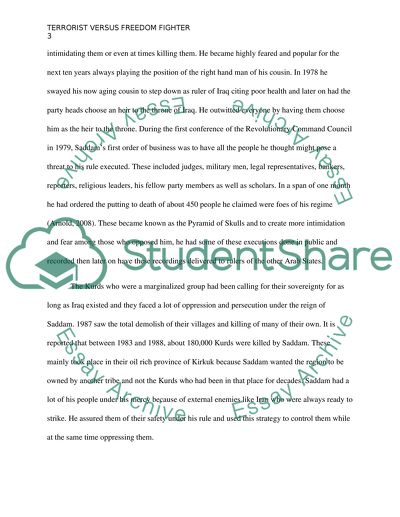Cite this document
(“A Freedom Fighter or Terrorist Essay Example | Topics and Well Written Essays - 2000 words”, n.d.)
A Freedom Fighter or Terrorist Essay Example | Topics and Well Written Essays - 2000 words. Retrieved from https://studentshare.org/history/1455657-one-manyies-terrorist-is-another-manyies-freedom
A Freedom Fighter or Terrorist Essay Example | Topics and Well Written Essays - 2000 words. Retrieved from https://studentshare.org/history/1455657-one-manyies-terrorist-is-another-manyies-freedom
(A Freedom Fighter or Terrorist Essay Example | Topics and Well Written Essays - 2000 Words)
A Freedom Fighter or Terrorist Essay Example | Topics and Well Written Essays - 2000 Words. https://studentshare.org/history/1455657-one-manyies-terrorist-is-another-manyies-freedom.
A Freedom Fighter or Terrorist Essay Example | Topics and Well Written Essays - 2000 Words. https://studentshare.org/history/1455657-one-manyies-terrorist-is-another-manyies-freedom.
“A Freedom Fighter or Terrorist Essay Example | Topics and Well Written Essays - 2000 Words”, n.d. https://studentshare.org/history/1455657-one-manyies-terrorist-is-another-manyies-freedom.


